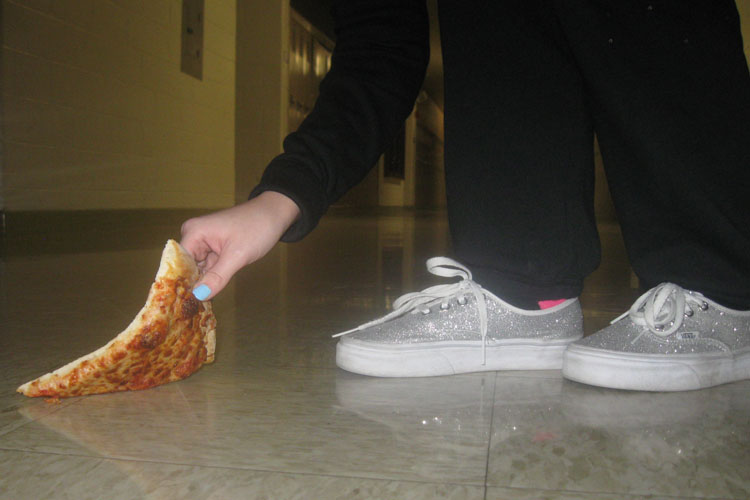Imagine, you’re about to eat the last square of your Hershey’s bar you’ve been craving to eat for days. As you lift it into your mouth, it slips from your hands and onto the floor. Do you pick it up and eat it regardless of the bacteria, or throw it away because you don’t want to take the risk?
A survey of 126 West students showed that 59 percent admit to eating dropped food.
“I always do it, I’ve even ate food I dropped on the kitchen floor of my workplace.” junior Chelsey Davis admits.
The five second rule is the belief that food dropped for a short period of time is okay to eat because it doesn’t pick up bacteria. However, this myth is fake.
An experiment conducted by Myth Busters showed that dropped food can pick up bacteria immediately. They discovered that certain areas of the floor had different bacteria levels than other spaces around them. Therefore where you drop the item determines the bacteria levels. By dropping crackers and deli meat on an equally contaminated floor for five seconds, they concluded that even though the cracker picked up fewer bacteria than the meant due to its dryer substance, still many different species of bacteria contaminated each food.
Another experiment showed that food dropped for two seconds had the same bacteria count as food dropped longer periods of time. Scientists concluded that food dropped at all, no matter the length picks up all bacteria on the floor at that time.
It’s easy to see when a floor is dirty; however bacteria and viruses are invisible to the naked eye. A recent study by Gerba found 830 bacteria lived per square inch on a kitchen floor, and 1150 on the bathroom floor.
What are those bacteria exactly? E. coli, salmonella, lysteria, campylobacter, as well as other serious viruses.
E. coli is a bacterial infection that is transmitted through food. Contaminated Feces gets into food, E. coli is given to the person, making them sick with intestinal problems, fever, cramping, and nausea.
E. coli is commonly found in cows, and since manure contains feces, it can effect crops.
Recently Taylor Farms had to recall spinach that affects 39 states, including Iowa, because of E. coli contamination.
E. coli also affects beef products due to the contaminated cattle. However, cooking your food at the right temperature will protect you against most e. coli sickness because high temperatures kill harmful bacteria.
What people don’t know, is that E. coli normally lives inside your intestines, where it helps your body break down and digest the food you eat, It’s the higher levels that toxate your body.
Despite the many illnesses caused by food, people can get sick from the bacteria in areas they use everyday.
Most students wouldn’t eat off the toilet seat, however a survey done by the NSF found that there were ten times more bacteria on a cafeteria tray than a school bathroom toilet seat.
Classroom desks can contain the flu virus and Nora virus form others who sat there. Students should avoid touching their eyes, nose and mouth after touching commonly shared objects.
The University of Arizona conducted a study of how much bacteria is found on desks, and was surprised that there were over 21,000 germs per square inch.
With one of the worst flu seasons, and harboring bacteria all around us, sanitizing your hands, more efficient hand washing, and precautions on food intake can help to prevent you from these viruses.
“Taking the extra step to prevent yourself from sickness is crucial during this sick season, and always.” Linda Manders said.

